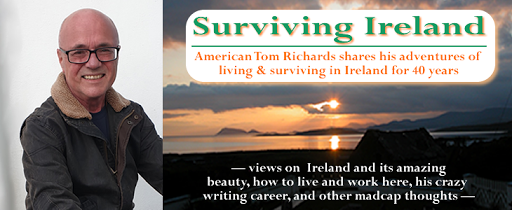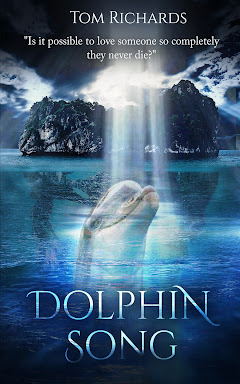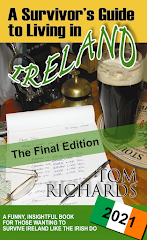Newsflash, Eyeries, County Cork. It's official, folks. Today Ireland's Central Statistics Office announced that the unemployment rate has fallen to 12 percent. That's the best showing in years. What this means, of course, is that more than 100,000 people are at work today than had been at the bottom of the Great Recession. More jobs are driving increased consumer spending and government tax takes. More jobs are helping people - both locals and immigrants - to crawl out of their desperate financial straights and get on with living. More jobs are giving people hope.
Right? Well maybe not. Not if you take the results of this past weekend's local elections into account. Last Friday, the Irish people voted on a county by county basis to choose over 900 local representatives as well as 11 MEPs, Ireland's European Union legislators. The results were shocking, at least to the sitting government.
Candidates from parties that currently form the existing coalition government - Fine Gael and Labour - were given a roasting at the local polls. For the first time in Ireland's history, Sinn Fein - Ireland's left-leaning political party- gained almost 20 percent of the popular vote. Political Independents have also done exceedingly well.
The local elections, occurring almost mid-term in the life of the present Government, gave Irish people the opportunity to grade the Government on its performance to date. That grade? An F. For Failure.
We're Mad as Hell and We Won't Take it Anymore
Why has Ireland's current government been giving such a poor mark? This government has, after all, managed to turn the country around. The economy is also in the middle of a U-Turn that can only be welcomed by everyone - both employed and unemployed. Ireland is officially out of bankruptcy and we've managed to get rid of the European Troika who made our lives a misery for the past six years. And while Ireland Inc continues to increase its indebtedness, the rate of that increase is falling drastically. Soon, it is hoped, Ireland will begin the grueling task of chipping away at the Mount Everest of debt that we've incurred since 2008.
But the turn-around has come at a price. The people of Ireland have paid for it - every bloody red cent - and will continue to pay for generations to come. We pay in record tax increases that the Government has inflicted on its population. We pay for it in significant salary cuts experienced by anyone who happens to be an employee of the Government. If you're a cop, a fireman, a teacher, a civil servant, a doctor, or a nurse, you've seen your income drop by almost 20 percent one way or another.
We pay for it if we are fortunate to have a private pension fund. The government takes a slice of any cash that we've saved - both principle and interest - and will do so for years to come. We pay whenever we buy something because the standard rate of VAT (Value Added Tax) which had been 21 percent before the recession now stands at 23 percent. We pay in new property taxes and new water charges and a new Universal Social Charge which adds a couple of percentage points to the already outlandish tax on salaries.
The Irish also pay with a significant drop in social services. If you're poor, don't automatically expect to receive a medical card. Or housing. Or enough social assistance to keep you from starving. Recently, I heard of a young woman - a friend of my daughter's - a single Mum, broke, down on her luck. For a long time she suffered in silence. Then, at her wit's end and not knowing what else to do, she approached her friends for help. It turns out that this young woman was going to bed hungry every night. That shouldn't happen. Not in 21st Century Ireland.
If you're an American reading this, you might not appreciate the horror that Ireland is experiencing. But America is not a social welfare state. Ireland is, and we pay mightily for the privilege. Middle income people pay over 52% of their income in taxes. But we expect a few things in return.
Young single mothers not going to bed hungry, for example.
Yet it's happening in Ireland. Despite what we pay and will continue to pay for years and years to come.
Ireland's unemployment rate is way, way down. A wonderful thing. But Ireland's ability to protect those least able to help themselves is being compromised. Which is why the Irish gave the sitting Government a kick in the Goolies this past election.
We're angry, dammit. And unless the existing Government sorts things out, we'll find someone else who will.
My small granny and me
6 years ago





